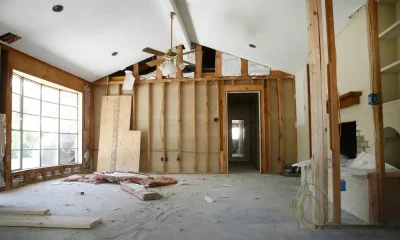Trends
Property Owners Love Their AC And Here’s Why

Property owners love air conditioning units or ACs. While they were once a luxury now, they’re affordable, and once you’ve got one, they’re hard to live without it. Millions of us rely on these systems to keep our homes, businesses, and cars cold in summer, warm in winter. Property or Real Estate investors also see the value in air conditioners in rental properties.
Attracting high-quality tenants is no small feat in some areas where competition for tenants is tight. Landlords always want to be in control however sometimes they need to work hard to wrestle the power back from tenants when the supply of available rentals exceeds demand for them. When this happens, prospective tenants can pick and choose their next rental property, and this makes it harder to secure a tenancy agreement when the property becomes vacant. Landlords, therefore, need to make sure their property not only ticks all the boxes with the usual bits and bobs including low-cost energy saving lightbulbs (yes it’s true) and also offers something more.
An AC unit can be the point of difference, particularly in older stock and cheaper rental areas, so what do we need to know about air conditioners? Here’s some exciting stuff on ACs.
Air Conditioning 101
So how do AC systems work? There are four main systems that make up an air conditioner: compressor, condenser, expansion controls, and evaporator. It doesn’t matter if your AC is a window unit or the most expensive HVAC system around, essentially they have four main components. First up is the refrigerant which refrigerators also have. In saying this not all air con units are keeping with this technology, energy-efficient newer models are phasing out certain refrigerants such as R-22 because they are harmful to the environment.
Once you turn your AC on, it begins to suck air in. The refrigerant cools the air by absorbing its heat. It does this is by converting from a liquid into hot vapor, and this vapor is located inside the air conditioner coils. The air is moved to the compressor, which, as you probably imagined, compresses it. This increases the heat again, but don’t fret; everything is under control. The vapor moves to the condenser outside of your home, and the heated gas is released outside. The cool vapor turns back into its original liquid form and the coolant heads back to its original location via the expansion controls.
Humidity
This process also dehumidifies the air, which is more critical in some portions of the United States than in other areas. Dehumidification happens in the evaporator coil. Since humid air feels hotter on the skin, you feel more relaxed after dehumidification even if you live in a dry climate. Portions of the U.S. with extreme humidity often have new dehumidifying systems to help keep the indoor air as comfortable as possible. The hotter and more humid the air is, the more oppressive it becomes.
This is just the 101 of how your air conditioning works, but now you know it goes through several phases to keep you and your tenants cool, comfortable, happy, and in love with it. Keep up the maintenance by getting it serviced regularly per its manufacturer’s instructions.






